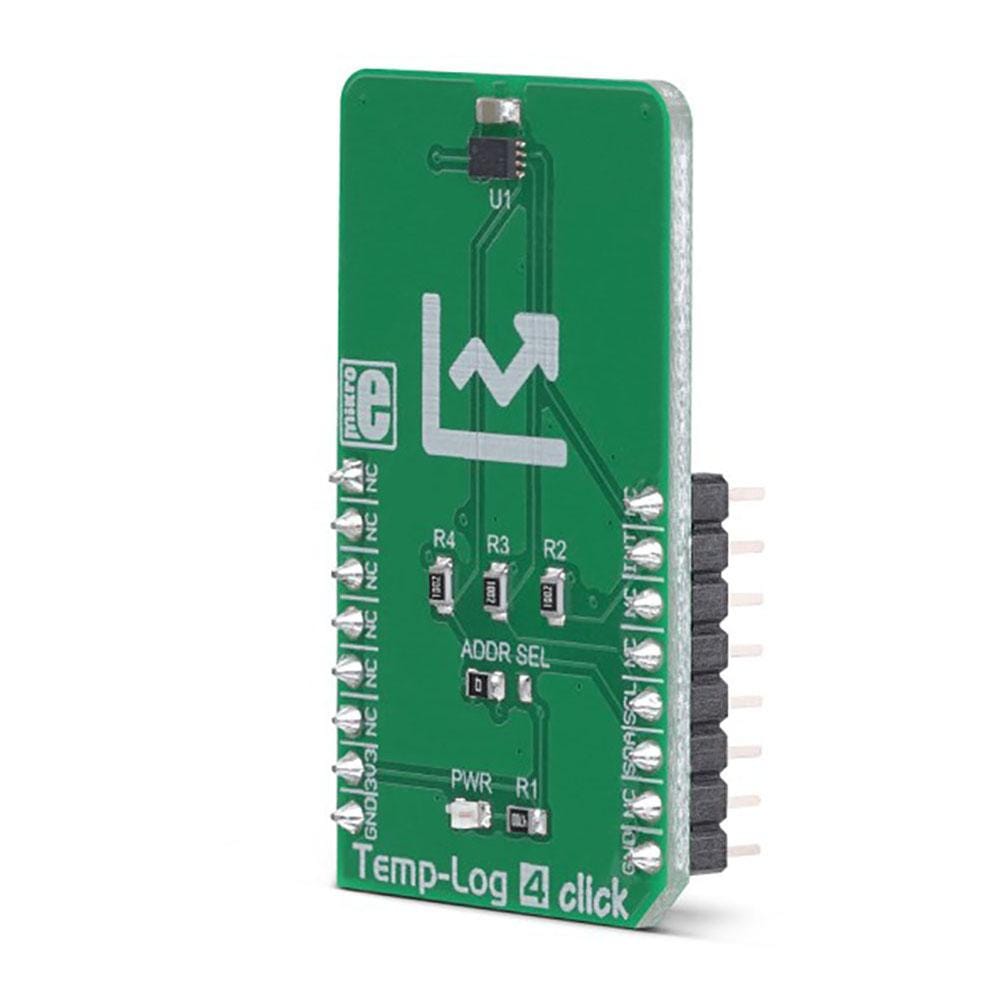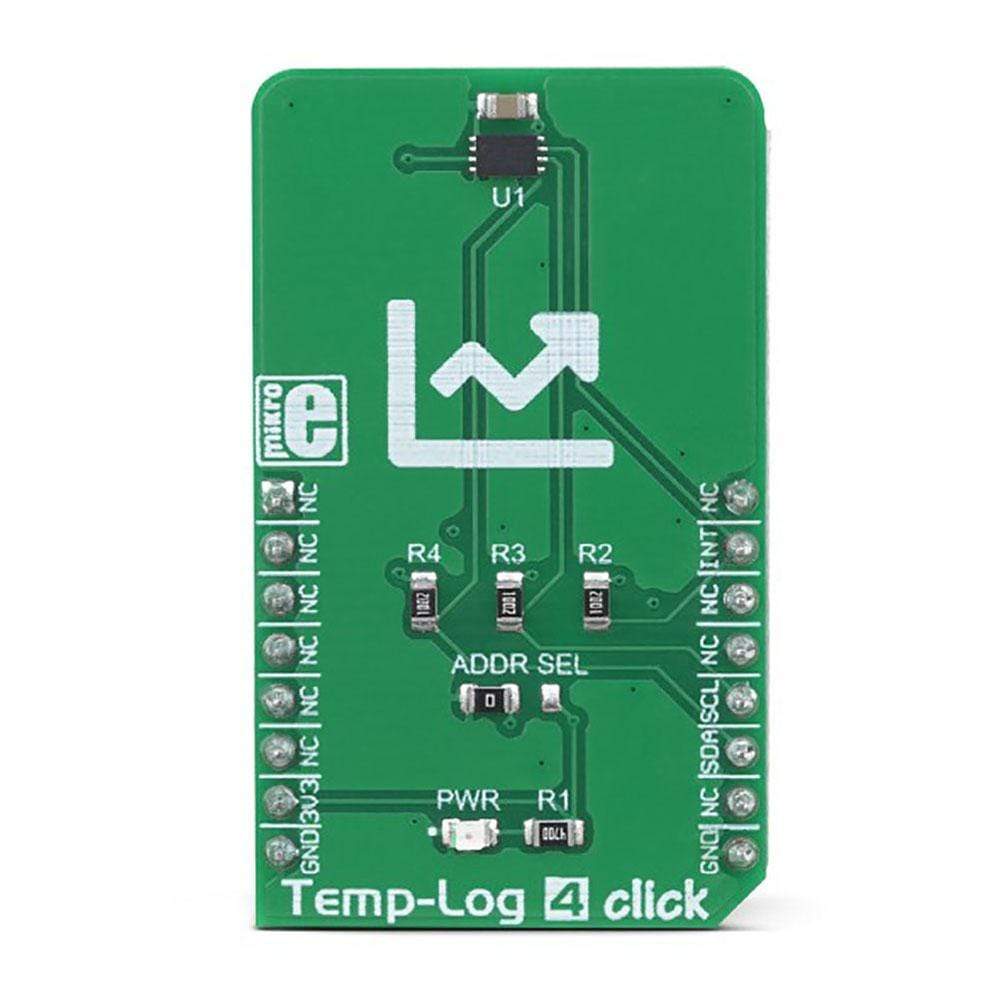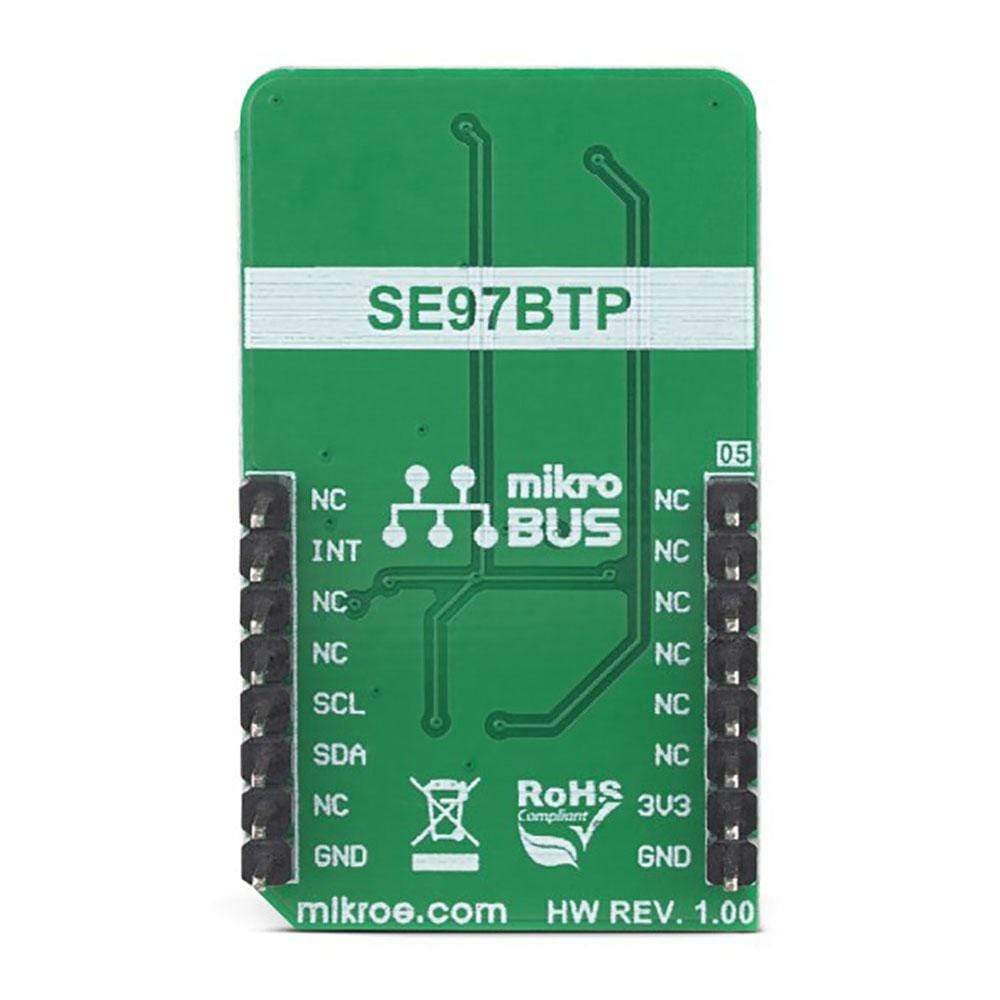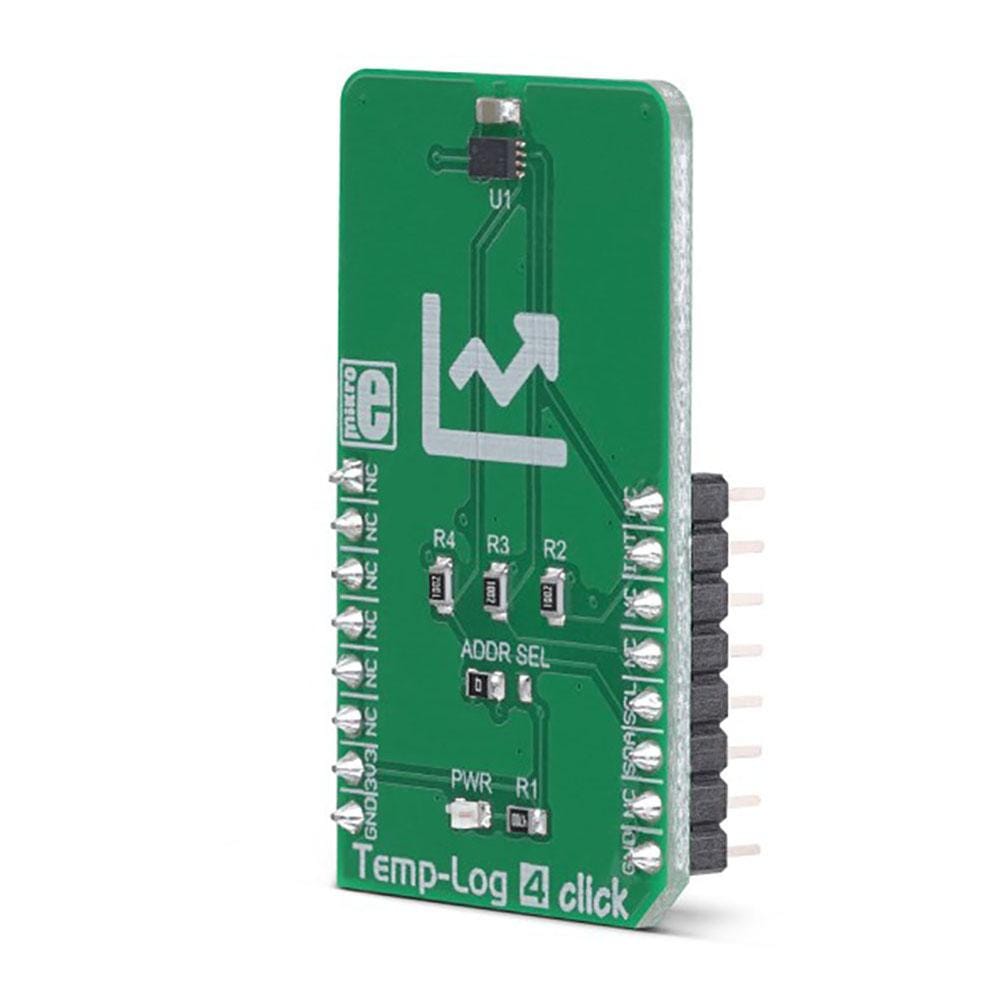
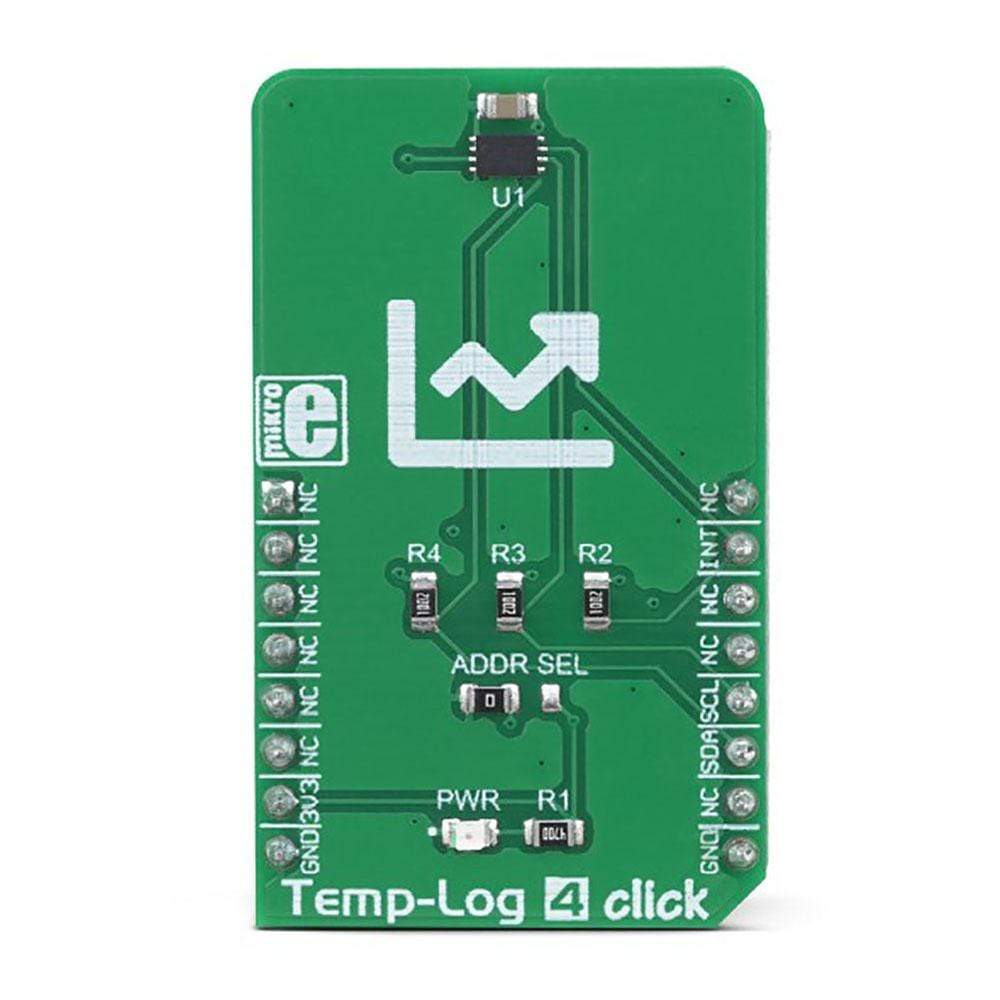
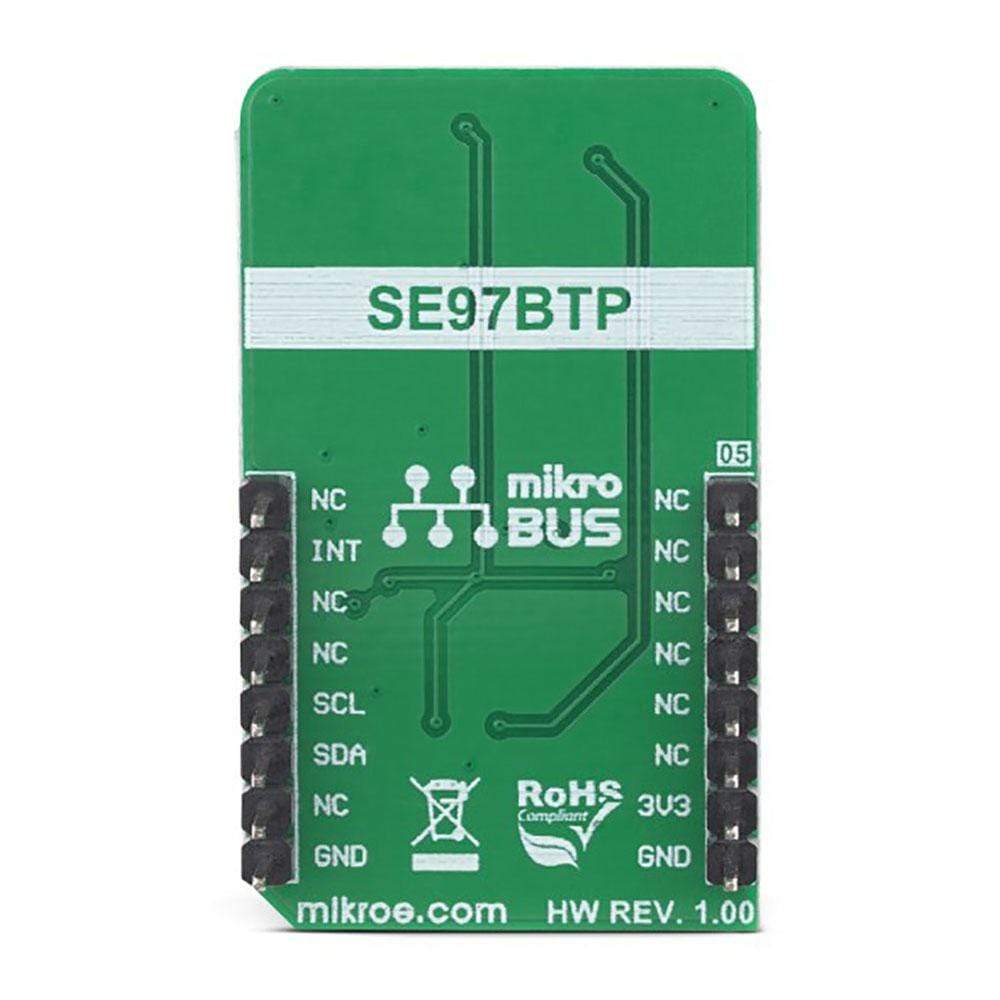
Overview
The Temp-Log 4 Click Board™ measures temperature and features the SE97B IC, an accurate temperature sensor IC with integrated EEPROM. Besides the thermal sensor, this IC is equipped with additional 256 bytes of EEPROM, integrated on the same die. This can be a very useful option for some applications: it allows auxiliary data to be stored within the same IC, so no additional EEPROM IC is required. This can simplify the design greatly, reducing the number of required external components.
Downloads
Das Temp-Log 4 Click Board™ misst die Temperatur und verfügt über den SE97B IC, einen präzisen Temperatursensor-IC mit integriertem EEPROM. Neben dem Temperatursensor ist dieser IC mit zusätzlichen 256 Byte EEPROM ausgestattet, die auf demselben Chip integriert sind. Dies kann für einige Anwendungen eine sehr nützliche Option sein: Sie ermöglicht die Speicherung zusätzlicher Daten im selben IC, sodass kein zusätzlicher EEPROM-IC erforderlich ist. Dies kann das Design erheblich vereinfachen und die Anzahl der erforderlichen externen Komponenten reduzieren.
| General Information | |
|---|---|
Part Number (SKU) |
MIKROE-3329
|
Manufacturer |
|
| Physical and Mechanical | |
Weight |
0.018 kg
|
| Other | |
Country of Origin |
|
HS Code Customs Tariff code
|
|
EAN |
8606018714315
|
Warranty |
|
Frequently Asked Questions
Have a Question?
Be the first to ask a question about this.

